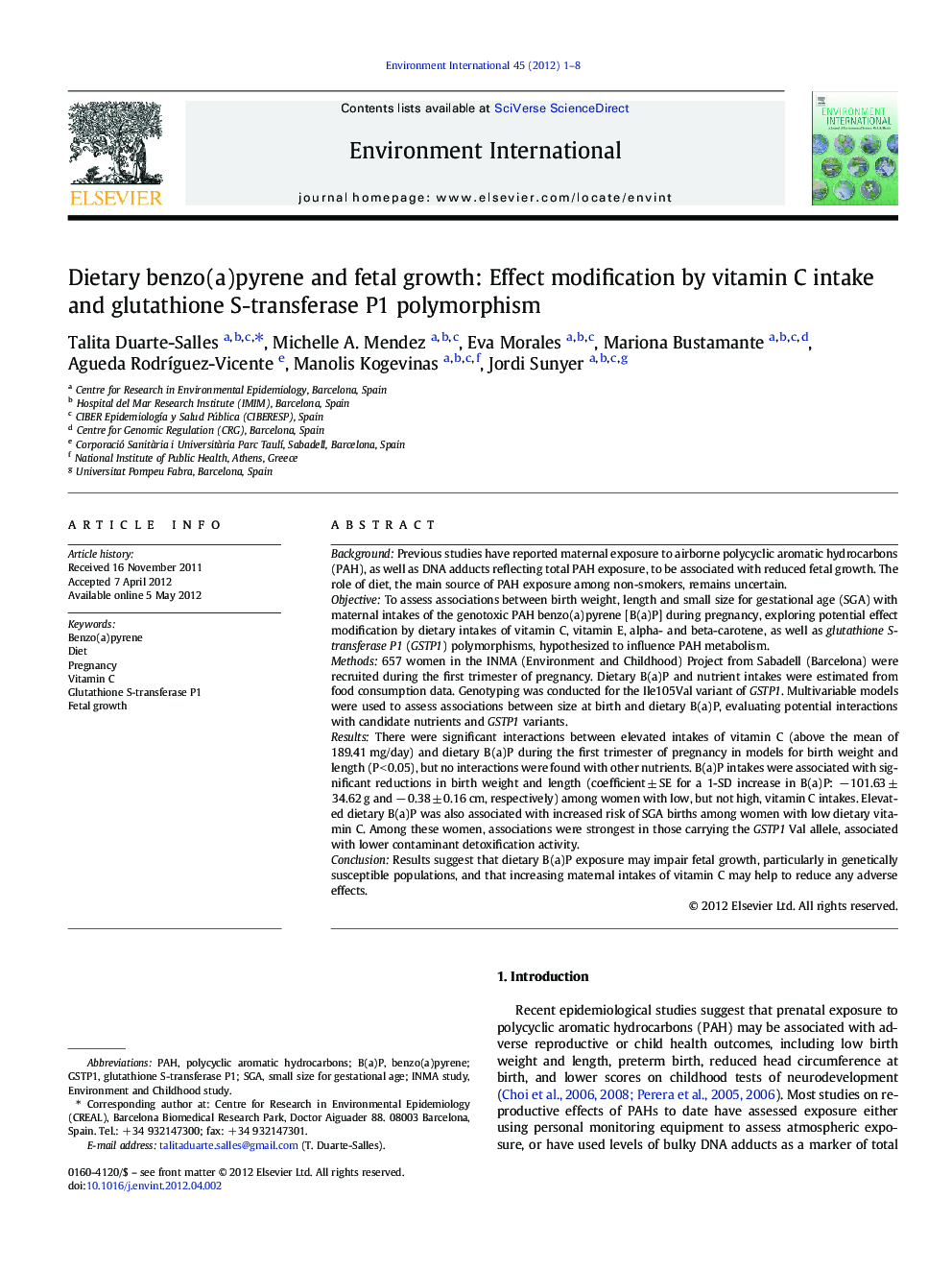| کد مقاله | کد نشریه | سال انتشار | مقاله انگلیسی | نسخه تمام متن |
|---|---|---|---|---|
| 4423034 | 1619082 | 2012 | 8 صفحه PDF | دانلود رایگان |

BackgroundPrevious studies have reported maternal exposure to airborne polycyclic aromatic hydrocarbons (PAH), as well as DNA adducts reflecting total PAH exposure, to be associated with reduced fetal growth. The role of diet, the main source of PAH exposure among non-smokers, remains uncertain.ObjectiveTo assess associations between birth weight, length and small size for gestational age (SGA) with maternal intakes of the genotoxic PAH benzo(a)pyrene [B(a)P] during pregnancy, exploring potential effect modification by dietary intakes of vitamin C, vitamin E, alpha- and beta-carotene, as well as glutathione S-transferase P1 (GSTP1) polymorphisms, hypothesized to influence PAH metabolism.Methods657 women in the INMA (Environment and Childhood) Project from Sabadell (Barcelona) were recruited during the first trimester of pregnancy. Dietary B(a)P and nutrient intakes were estimated from food consumption data. Genotyping was conducted for the Ile105Val variant of GSTP1. Multivariable models were used to assess associations between size at birth and dietary B(a)P, evaluating potential interactions with candidate nutrients and GSTP1 variants.ResultsThere were significant interactions between elevated intakes of vitamin C (above the mean of 189.41 mg/day) and dietary B(a)P during the first trimester of pregnancy in models for birth weight and length (P < 0.05), but no interactions were found with other nutrients. B(a)P intakes were associated with significant reductions in birth weight and length (coefficient ± SE for a 1-SD increase in B(a)P: − 101.63 ± 34.62 g and − 0.38 ± 0.16 cm, respectively) among women with low, but not high, vitamin C intakes. Elevated dietary B(a)P was also associated with increased risk of SGA births among women with low dietary vitamin C. Among these women, associations were strongest in those carrying the GSTP1 Val allele, associated with lower contaminant detoxification activity.ConclusionResults suggest that dietary B(a)P exposure may impair fetal growth, particularly in genetically susceptible populations, and that increasing maternal intakes of vitamin C may help to reduce any adverse effects.
► Fetal growth indicators and maternal intakes of benzo(a)pyrene [B(a)P] in pregnancy
► Subjects from the INMA (Environment and Childhood) Project in Sabadell
► Significant interactions between elevated vitamin C intakes and dietary B(a)P
► B(a)P related with lower birth weight and length in women with low vitamin C intakes
► Associations were strongest in subjects carrying the GSTP1 Val allele.
Journal: Environment International - Volume 45, 15 September 2012, Pages 1–8